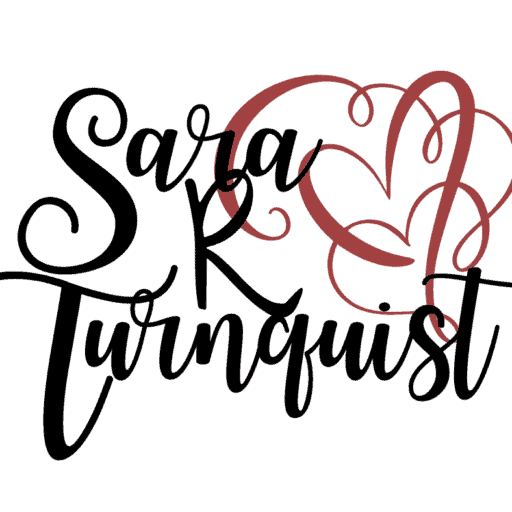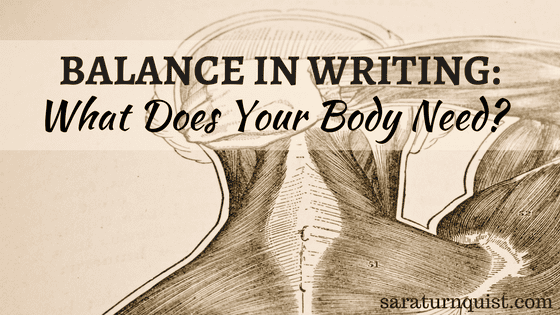I don’t know if you’ve heard before…but writing takes a physical toll on your body. I know it may not seem like it. I mean, all we’re doing is sitting and typing on a keyboard, right?
If you really think about it, the challenges come to light. If you aren’t set up ergonomically, you can develop carpal tunnel issues, there can be posture concerns, the fact that we are sedentary for extended periods of time (still but for our fingers moving as if to fly off our hands)…these are just a few.
Ergonomics
 “Ergonomics” technically means “the study of people’s efficiency in their work environment”. However, we generally understand it to mean the proper function of our work environment. Which does produce efficiency in that it reduces work place injury, leading to higher performing workers.
“Ergonomics” technically means “the study of people’s efficiency in their work environment”. However, we generally understand it to mean the proper function of our work environment. Which does produce efficiency in that it reduces work place injury, leading to higher performing workers.
Let’s think about your keyboard (which is by far the thing of focus when we talk about ergonomics for all who work at a computer screen). What is the most ergonomically sound way to posture your keyboard and hands/wrists to prevent wearing on those ligaments and tendons?
An ergonomic keyboard is one built with the goal to reduce muscle strain, thus reducing the risk of carpal tunnel syndrome. Many “ergonomic keyboards” are built with a V-shape, keeping the hands at a more natural angle for your posture. But some think that reducing strain, rather than maintaining a certain posture, is more important.
Other suggestions for body position include: have the keyboard 1-2 inches above your thighs and keep your mouse and keyboard in such a position that they are shoulder width apart. The idea is to keep your elbows close to your body. This puts your arms and torso in a less strained position.
Posture Concerns
This has become particularly important for me. A few weeks ago, I was experiencing an increase in the frequency of migraines. I am a chronic migraine sufferer. And I take two pills daily to prevent them. Still, I started to experience 3-5 a week instead of the 1-2 a month we had reduced them to. My doctor took an x-ray of my neck to see if there was anything of note. And we found something a little off topic for the migraines, but something of concern.
 I had degeneration (early arthritis) in my neck. Now, I won’t share my age (what lady would?), but I have not reached 40. I am, as my doctor put it “waaayyyy too young to have this kind of thing to this degree”. His thoughts? The long hours spent writing. My posture. The fact that my laptop was typically at chest level, leaving me looking down, created a problem for my neck curvature. This also aggravated the muscles at the base of my neck. Now I have two problems: degeneration and muscle spasms. So, I have revamped my work space to fix the one issue and I am working on making those muscles happy again.
I had degeneration (early arthritis) in my neck. Now, I won’t share my age (what lady would?), but I have not reached 40. I am, as my doctor put it “waaayyyy too young to have this kind of thing to this degree”. His thoughts? The long hours spent writing. My posture. The fact that my laptop was typically at chest level, leaving me looking down, created a problem for my neck curvature. This also aggravated the muscles at the base of my neck. Now I have two problems: degeneration and muscle spasms. So, I have revamped my work space to fix the one issue and I am working on making those muscles happy again.
 How did I fix it? I raised my monitor and swiped my husband’s blue tooth keyboard. I already had a large monitor that paired with my laptop in my office. It is large enough that I am not looking down. And when I work downstairs, I have one of those portable laptop desks to set my laptop on, at eye level, and type on the “swiped” bluetooth keyboard. Now, my neck is more properly aligned.
How did I fix it? I raised my monitor and swiped my husband’s blue tooth keyboard. I already had a large monitor that paired with my laptop in my office. It is large enough that I am not looking down. And when I work downstairs, I have one of those portable laptop desks to set my laptop on, at eye level, and type on the “swiped” bluetooth keyboard. Now, my neck is more properly aligned.
I was also warned to use a small pillow behind my lumbar region to create better posture for my upper back.
Sedentary for Extended Periods of Time
An easy answer to this is a standing desk. But the world is discovering that, while it fixes some problems, it can bring on its own. Some of those can be solved by securing a standing desk mat or one of the contraptions that you roll your feet on to stimulate blood flow. My chiropractor even mentioned for my response that a balance board is better to keep from standing in one position for too long.
 Another way to get in activity would be to set a timer on your writing sessions. I know we don’t want to do this. Get up every 30-45 minutes, get some water, go to the bathroom. Perhaps do 10 squats while your at it 🙂 Maybe take a longer break at lunch and take a 20 minute stroll around the neighborhood to increase circulation. A fresh wave of blood flow to the brain will only increase your creativity.
Another way to get in activity would be to set a timer on your writing sessions. I know we don’t want to do this. Get up every 30-45 minutes, get some water, go to the bathroom. Perhaps do 10 squats while your at it 🙂 Maybe take a longer break at lunch and take a 20 minute stroll around the neighborhood to increase circulation. A fresh wave of blood flow to the brain will only increase your creativity.
In Conclusion
We already knew that we had challenges as writers. And balancing life, home, commitments, sometimes another job, and our passion for writing is no easy task. But we also have to consider our bodies and the physical demands placed on us, and how we can reduce strain, injury, and bad habits.
Something to think about.
Happy Writing!


